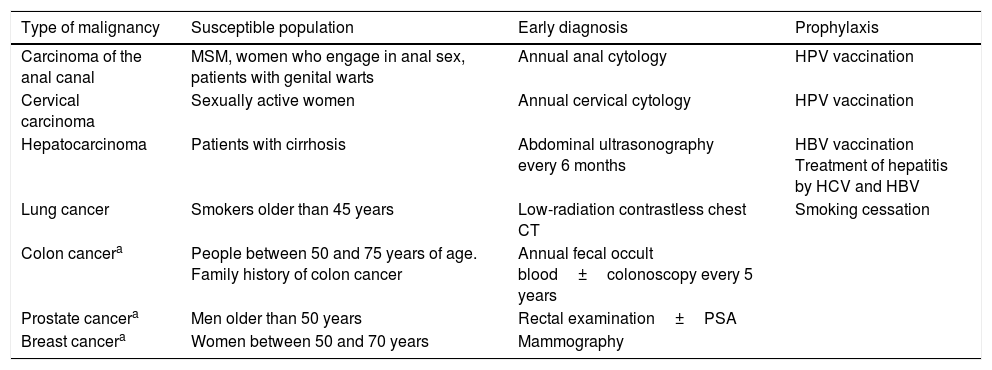Since the start of the human immunodeficiency virus (HIV) epidemic, tumor disease among patients has been significant. The collection of malignancies can be divided primarily into 2 groups: those associated with HIV (all of which are related to viral diseases) and those not associated with HIV (only some of which are associated with viral diseases).
The origin of these malignancies is multifactorial, and the main causes that have led to an increase in tumor disease are immunosuppression, coinfection with oncogenic viruses and life prolongation secondary to the use of antiretroviral therapy.
Establishing the general characteristics of the undiagnosed AIDS tumors is difficult, mainly because they are a highly heterogeneous group formed by malignancies of a diverse nature. The treatments do not differ from those used in the general population, although the management can be more difficult due to the late diagnosis, drug interactions and associated comorbidities.
Desde los inicios de la epidemia del virus de la inmunodeficiencia humana (VIH), la patología tumoral ha sido muy importante. El conjunto de las neoplasias se puede dividir básicamente en 2 grupos: las asociadas al VIH, todas ellas relacionadas con enfermedades virales, y las no asociadas al VIH, entre las que algunas están asociadas a enfermedades virales y otras no.
El origen es multifactorial y las principales causas que han llevado a que se produzca un aumento de la patología tumoral son la inmunodepresión, la coinfección con virus oncogénicos y la prolongación de la vida secundaria al uso de tratamiento antirretroviral.
Establecer las características generales de los tumores no diagnósticos de sida es difícil fundamentalmente porque son un grupo muy heterogéneo formado por neoplasias de diversa índole. Los tratamientos no difieren de los empleados en la población general, aunque el manejo puede ser más difícil por el diagnóstico tardío, las interacciones medicamentosas y las comorbilidades asociadas.
Article
Diríjase desde aquí a la web de la >>>FESEMI<<< e inicie sesión mediante el formulario que se encuentra en la barra superior, pulsando sobre el candado.

Una vez autentificado, en la misma web de FESEMI, en el menú superior, elija la opción deseada.

>>>FESEMI<<<








